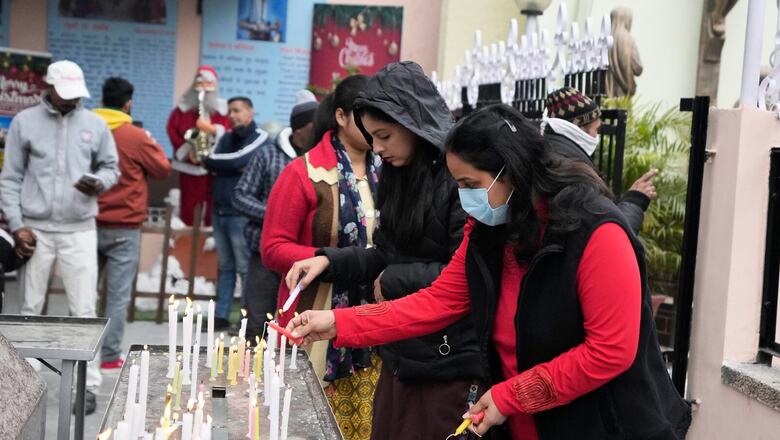
views
News of Covid-19 making a ‘comeback’ has grabbed headlines and primetime slots, with special focus on China. Reports suggest that nearly 3.7 crore people in China may have been infected with Covid-19 on a single day last week, making the country’s outbreak by far the world’s largest.
A sudden spurt in cases has also been witnessed in Japan, the US, the Republic of Korea, and Brazil. This comes as a sad reminder at a time when we wished to enter the New Year assuming that the worst is over and we can go back to our normal lives.
While the Covid surge in China has a different story altogether, it definitely puts the spotlight on the continuous emergence of new variants.
Last week, I spoke to several microbiologists, virologists and scientists to understand where we are headed and how worried the human race should be.
The answers I received were mostly similar and in crux meant “Covid19 may never end” and “mutants will keep coming, just like the flu virus”. Hence, as humans learnt to live with the flu virus, they need to learn to live with the coronavirus as well.
The journey won’t be difficult if you create a Covid kit – hygiene practices, antiviral medicines and vaccines.
HOW WE NAVIGATED THE FLU PANDEMIC?
Today, we don’t take the flu seriously and routinely take flu shots. But in 1918, the flu outbreak, also called the “influenza pandemic”, gripped the world much more severely than the novel coronavirus in 2020.
From schools to offices, theatres, churches, meeting places and everything was closed due to the circulation of the virus. The first phase pandemic continued from 1918 to 1920.
Unfortunately, within the first year of the outbreak, more than 2 crore deaths were recorded worldwide. In contrast, Covid-19 death toll in the last two years stood at slightly less than 70 lakh.
Between the 1930s and 1940s, flu viruses were studied and flu vaccines were developed but first given to military staffers followed by safer vaccines which were given to the masses in 1945.
As the virus kept mutating for its survival, in 1957, a new strain, H2N2, caused another flu pandemic. In 1968, another strain, H3N2, induced a fresh flu pandemic. Both outbreaks killed more than 20 lakh people worldwide.
This pushed the scientists to develop flu vaccines for the changing flu strains instead of using the same old vaccine for each outbreak. Even now, flu shots are tweaked every year by using the latest strain.
Now, after several years, deaths caused by flu viruses have reduced phenomenally, but influenza remains one of the world’s greatest public health challenges.
According to the World Health Organization estimates, 1 billion people worldwide get the flu every year and around 290,000 to 650,000 people die of flu-related causes every year worldwide. Flu viruses are still causing deaths worldwide, but much fewer than previous onslaughts.
WHAT WE SHOULD DO TO NAVIGATE COVID-19?
Chance to Develop An Anti-Viral Medicine: The need of the hour is an anti-viral medicine to cure the illness caused by the novel coronavirus, shorten the duration of the illness and prevent the progression of disease and hospitalisation.
We have Molnupiravir and Paxlovid, the only antivirals approved for Covid-19 treatment, but as we move ahead, more studies will establish the efficacy of these drugs and the need to create easily available, safe and cost-effective options. India’s strong pharmaceutical industry can take the lead here by manufacturing generic anti-viral pills apart from investing resources into the development of other anti-viral alternatives.
Learn to Dress Up With a Mask: Wearing masks should not be seen as a burden, rather as a good public health practice. The use of masks has been more common in Asian countries than in Europe or the US. In Japan, China and Taiwan, people have worn masks much before the outbreak of Covid-19, for a variety of cultural and environmental reasons, since at least the 1950s.
For instance, the Japanese wear masks when they feel under the weather as a responsibility to prevent the spread of infection among others. They actually started wearing masks in the 1950s, it is believed, to prevent side effects from air pollution, the result of industrialisation.
It is said that people in Taiwan wear masks to keep their faces warm in the winter apart from protecting themselves from air pollution and germs.
This tiny aid became part of Asia’s culture after the outbreak of acute respiratory syndrome (SARS) in China in 2002 when the disease spread to Singapore and Taiwan as well.
Also, maintaining hand hygiene and being mindful of your exposure in crowded places are equally important.
Top Up Your Immunity: So far, there is no scientific evidence that suggests that we need a “fourth dose” of the vaccine against Covid-19. While there are several debates over the long-lasting immunity given by the vaccines administered so far, if the evolution of mutated strains continues, immuno-compromised or elderly people may need a tweaked version of Covid vaccines similar to flu shots in regular intervals.
IN THE END…
Virus is a tricky pathogen.
It will keep coming back in different shapes and sizes to dodge the immunity of the human body whereas humans will keep finding ways to protect themselves. In the end, it’s the game of survival of the fittest between you and the virus.
Read all the Latest India News here



















Comments
0 comment